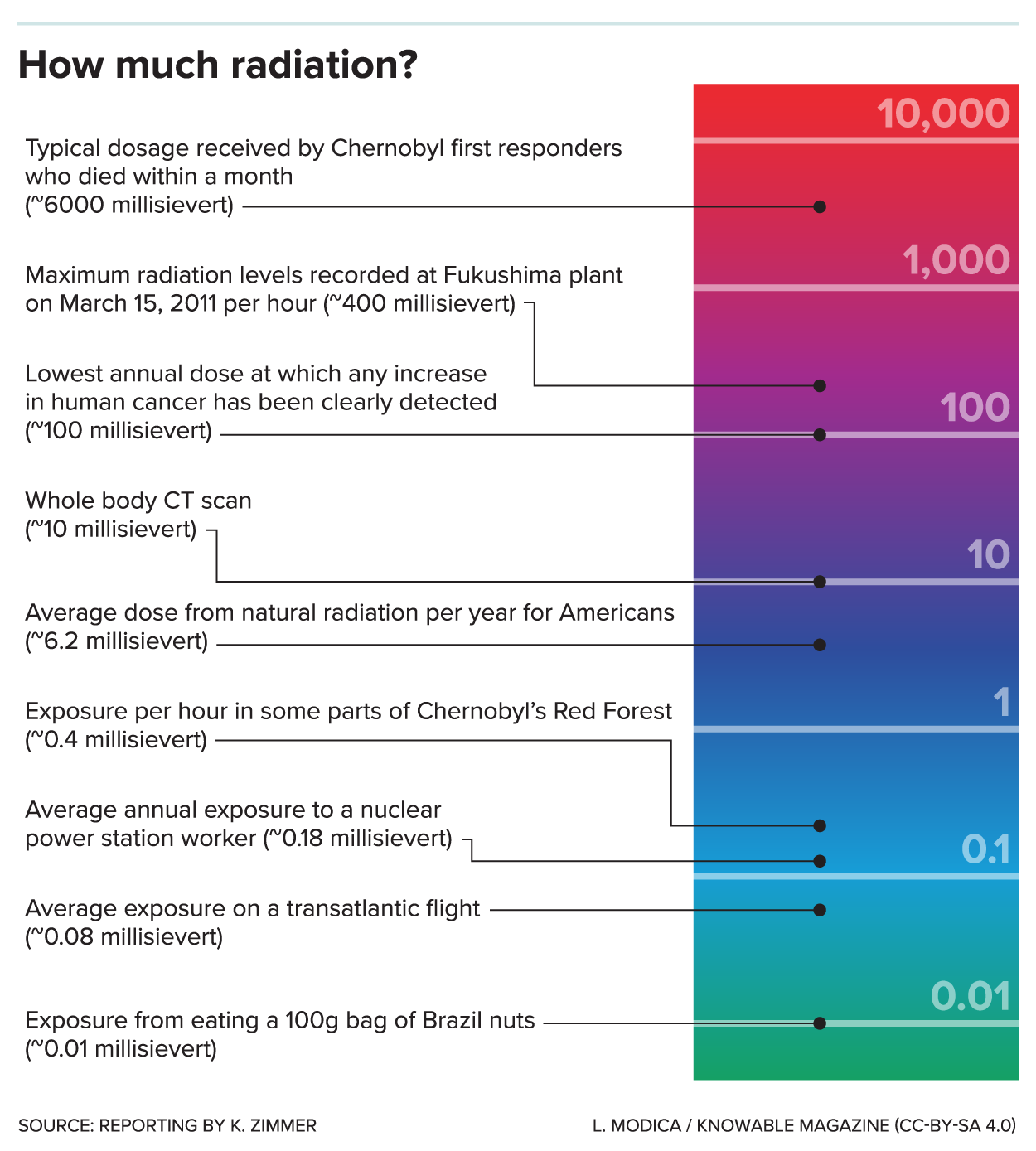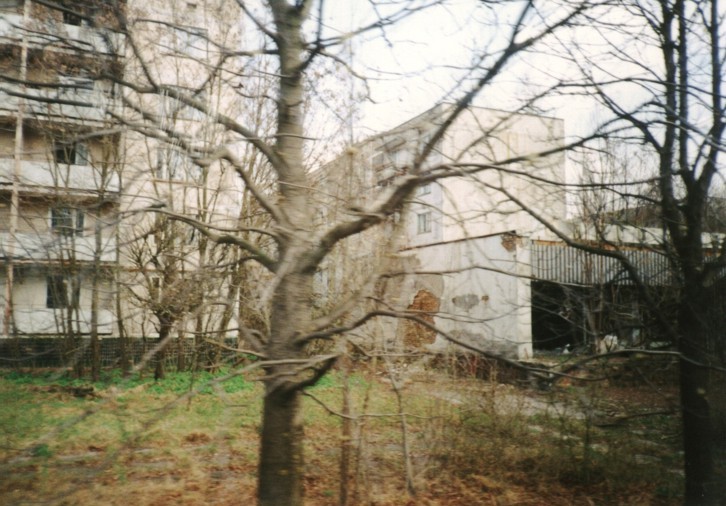|
Bellesrad
Bellesrad (Беллесрад) is short name for the State Institution for Radiation Monitoring and Radiation Safety (Государственное учреждение радиационного контроля и радиационной безопасности «Беллесрад») of the Republic of Belarus. It is subordinated to the State Forestry Committee of the Council of Ministers of Republic of Belarus. It was created to address the impact of the Chernobyl disaster on Belarus. The institution monitors and investigates radioactive contamination, usage and land rehabilitation, rehabilitation of vegetation resources. It also controls radioactive contamination of food products. In particular, Bellesrad posts warning signs and gives safety recommendations about wild plants and animals, e.g., about Mushroom picking in Slavic culture#Radiation, mushroom picking. It also oversees the breeding and monitoring of cattle and other agricultural practices in the Polesie State Rad ... [...More Info...] [...Related Items...] OR: [Wikipedia] [Google] [Baidu] |
Mushroom Picking In Slavic Culture
Mushroom hunting, mushrooming, mushroom picking, mushroom foraging, and similar terms describe the activity of gathering mushrooms in the wild, typically for culinary use. This practice is popular throughout most of Europe, Australia, Japan, Korea, parts of the Middle East, and the Indian subcontinent, as well as the temperate regions of Canada and the United States. Identifying mushrooms Morphological characteristics of the caps of mushroom, such as those illustrated in the above chart, are essential for correct visual mushroom identification. Numerous field guides on mushrooms are available and recommended to help distinguish safe, edible mushrooms from the many poisonous or inedible species. A spore print is a mushroom identification technique commonly used by mycologists and mushroom hunters to help identify the genus of a specimen and differentiate between similar looking species. Knowing where and when to search for mushrooms is an important identification skill th ... [...More Info...] [...Related Items...] OR: [Wikipedia] [Google] [Baidu] |
Chernobyl Disaster
The Chernobyl disaster was a nuclear accident that occurred on 26 April 1986 at the No. 4 reactor in the Chernobyl Nuclear Power Plant, near the city of Pripyat in the north of the Ukrainian SSR in the Soviet Union. It is one of only two nuclear energy accidents rated at seven—the maximum severity—on the International Nuclear Event Scale, the other being the 2011 Fukushima nuclear disaster in Japan. The initial emergency response, together with later decontamination of the environment, involved more than 500,000 personnel and cost an estimated 18 billion roubles—roughly US$68 billion in 2019, adjusted for inflation. The accident occurred during a safety test meant to measure the ability of the steam turbine to power the emergency feedwater pumps of an RBMK-type nuclear reactor in the event of a simultaneous loss of external power and major coolant leak. During a planned decrease of reactor power in preparation for the test, the operators accidentally dropp ... [...More Info...] [...Related Items...] OR: [Wikipedia] [Google] [Baidu] |
Polesie State Radioecological Reserve
The Polesie State Radioecological Reserve ( be, Палескі дзяржаўны радыяцыйна-экалагічны запаведнік, russian: Полесский государственный радиационно-экологический заповедник) (Acronym PSRER) is a radioecological nature reserve in the Polesie region of Belarus, which was created to enclose the territory of Belarus most affected by radioactive fallout from the Chernobyl disaster. The reserve adjoins the Chernobyl Exclusion Zone in Ukraine. The environmental monitoring and countermeasure agency, Bellesrad, oversees the food cultivation and forestry in the area. History Two years after the Chernobyl disaster, the Belarusian part of the Chernobyl Exclusion Zone was extended to a more highly contaminated area. Then, a closed-to-the-public nature reserve was established in Belarus with a total area of . The reserve was established on July 18, 1988. Before the disaster, over 22,000 ... [...More Info...] [...Related Items...] OR: [Wikipedia] [Google] [Baidu] |
Chernobyl Disaster Effects
The 1986 Chernobyl disaster triggered the release of radioactive contamination into the atmosphere in the form of both particulate and gaseous radioisotopes. , it was the world's largest known release of radioactivity into the environment. The work of the Scientific Committee on Problems of the Environment (SCOPE), suggests that the Chernobyl incident cannot be directly compared to atmospheric tests of nuclear weapons by simply saying that it's better or worse. This is partly because the isotopes released at Chernobyl tended to be longer-lived than those released by the detonation of atomic bombs. The economic damage caused by the disaster is estimated at $225 billion. Radiation effects on humans According to a 2009 United Nations Scientific Committee on the Effects of Atomic Radiation (UNSCEAR) study, the Chernobyl accident had by 2005 caused 61,200 man- Sv of radiation exposure to recovery workers and evacuees, 125,000 man-Sv to the populace of Ukraine, Belarus, and Ru ... [...More Info...] [...Related Items...] OR: [Wikipedia] [Google] [Baidu] |
List Of Chernobyl-related Articles
This is a list of Chernobyl-related articles. Disaster and effects * Comparison of Chernobyl and other radioactivity releases ** Comparison of the Chernobyl and Fukushima nuclear accidents * Chernobyl disaster * Effects of the Chernobyl disaster * Chernobyl necklace * Convention on Early Notification of a Nuclear Accident, adopted in direct response to Chernobyl * Cultural impact of the Chernobyl nuclear disaster * Deaths due to the Chernobyl disaster * Individual involvement in the Chernobyl disaster * Radiophobia * Threat of the Dnieper reservoirs Russo-Ukrainian War * Battle of Chernobyl Places and geography Power plant * Chernobyl Nuclear Power Plant * Chernobyl Nuclear Power Plant sarcophagus * Chernobyl New Safe Confinement Exclusion zone * Chernobyl Nuclear Power Plant Exclusion Zone, also known as the Zone of Alienation * Pripyat, abandoned city * Chernobyl, semi-abandoned city * Kopachi, abandoned village * Poliske, abandoned town * Red Forest Other * Slavutych, ... [...More Info...] [...Related Items...] OR: [Wikipedia] [Google] [Baidu] |
Republic Of Belarus
A republic () is a "state in which power rests with the people or their representatives; specifically a state without a monarchy" and also a "government, or system of government, of such a state." Previously, especially in the 17th and 18th centuries, the term was used to imply a state with a democratic or representative constitution (constitutional republic), but more recently it has also been used of autocratic or dictatorial states not ruled by a monarch. It is now chiefly used to denote any non-monarchical state headed by an elected or appointed president. , 159 of the world's 206 sovereign states use the word "republic" as part of their official names. Not all of these are republics in the sense of having elected governments, nor is the word "republic" used in the names of all states with elected governments. The word ''republic'' comes from the Latin term ''res publica'', which literally means "public thing", "public matter", or "public affair" and was used to refer t ... [...More Info...] [...Related Items...] OR: [Wikipedia] [Google] [Baidu] |
Radioactive Contamination
Radioactive contamination, also called radiological pollution, is the deposition of, or presence of radioactive substances on surfaces or within solids, liquids, or gases (including the human body), where their presence is unintended or undesirable (from the International Atomic Energy Agency (IAEA) definition). Such contamination presents a hazard because the radioactive decay of the contaminants, produces ionizing radiation (namely alpha, beta, gamma rays and free neutrons). The degree of hazard is determined by the concentration of the contaminants, the energy of the radiation being emitted, the type of radiation, and the proximity of the contamination to organs of the body. It is important to be clear that the contamination gives rise to the radiation hazard, and the terms "radiation" and "contamination" are not interchangeable. The sources of radioactive pollution can be classified into two groups: natural and man-made. Following an atmospheric nuclear weapon discharge ... [...More Info...] [...Related Items...] OR: [Wikipedia] [Google] [Baidu] |
Land Rehabilitation
Land rehabilitation as a part of environmental remediation is the process of returning the land in a given area to some degree of its former state, after some process (industry, natural disasters, etc.) has resulted in its damage. Many projects and developments will result in the land becoming degraded, for example mining, farming and forestry. Mine rehabilitation Modern mine rehabilitation aims to minimize and mitigate the environmental effects of modern mining, which may in the case of open pit mining involve movement of significant volumes of rock. Rehabilitation management is an ongoing process, often resulting in open pit mines being backfilled. After mining finishes, the mine area must undergo rehabilitation. * Waste dumps are contoured to flatten them out, to further stabilize them against erosion. * If the ore contains sulfides it is usually covered with a layer of clay to prevent access of rain and oxygen from the air, which can oxidize the sulfides to produce sulfur ... [...More Info...] [...Related Items...] OR: [Wikipedia] [Google] [Baidu] |
Vegetation
Vegetation is an assemblage of plant species and the ground cover they provide. It is a general term, without specific reference to particular taxa, life forms, structure, spatial extent, or any other specific botanical or geographic characteristics. It is broader than the term ''flora'' which refers to species composition. Perhaps the closest synonym is plant community, but ''vegetation'' can, and often does, refer to a wider range of spatial scales than that term does, including scales as large as the global. Primeval redwood forests, coastal mangrove stands, sphagnum bogs, desert soil crusts, roadside weed patches, wheat fields, cultivated gardens and lawns; all are encompassed by the term ''vegetation''. The vegetation type is defined by characteristic dominant species, or a common aspect of the assemblage, such as an elevation range or environmental commonality. The contemporary use of ''vegetation'' approximates that of ecologist Frederic Clements' term earth cover, a ... [...More Info...] [...Related Items...] OR: [Wikipedia] [Google] [Baidu] |
Government Of Belarus
The Government of the Republic of Belarus ( be, Урад Рэспублікі Беларусь), which consists of the Council of Ministers of the Republic of Belarus (), is the executive branch of state power in Belarus, and is appointed by the President of Belarus. The head of the Government is the President of Belarus, who manages the main agenda of the government and direct the ministers. The National Assembly of Belarus is the continuation of the Supreme Soviet of the BSSR and acts as the functioning parliament for Belarus. Council of Ministers Below are the 30 members of the Council of Ministers as of 19 August 2020, as well as the head of the presidential administration and the chairmen of the State Committees, who are not technically ministers but are included in the Council of Ministers. Offices which are not technically counted as ministerial posts are italicized. The prime minister, the first deputy prime minister(s), the deputy prime minister(s), the ministers of ec ... [...More Info...] [...Related Items...] OR: [Wikipedia] [Google] [Baidu] |
Science And Technology In Belarus
Science is a systematic endeavor that builds and organizes knowledge in the form of testable explanations and predictions about the universe. Science may be as old as the human species, and some of the earliest archeological evidence for scientific reasoning is tens of thousands of years old. The earliest written records in the history of science come from Ancient Egypt and Mesopotamia in around 3000 to 1200 BCE. Their contributions to mathematics, astronomy, and medicine entered and shaped Greek natural philosophy of classical antiquity, whereby formal attempts were made to provide explanations of events in the physical world based on natural causes. After the fall of the Western Roman Empire, knowledge of Greek conceptions of the world deteriorated in Western Europe during the early centuries (400 to 1000 CE) of the Middle Ages, but was preserved in the Muslim world during the Islamic Golden Age and later by the efforts of Byzantine Greek scholars who brought Greek man ... [...More Info...] [...Related Items...] OR: [Wikipedia] [Google] [Baidu] |





_(4).jpg)
